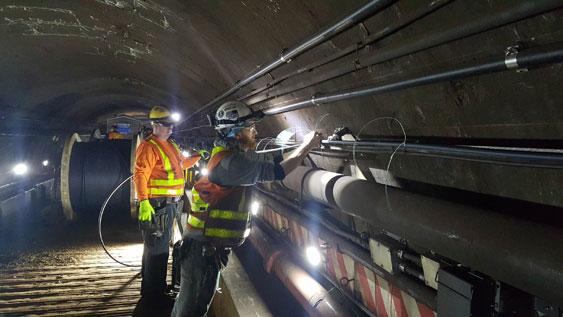- Related articles
- All Cisco GLC-ZX-SM-RGD ’s Information (Overview, Features, Data Sheet PDF, Price, Specif
- What are Advantages of Fiber Optic Cables?
- Applicable to 40GBASE-LRL4 Standard Optical Transceiver Models
- CISCO Catalyst 3750 Family
- Cisco Catalyst 6500 WS-X6816-GBIC Expansion Module 16-Port Gigabit Ethernet
- Optical Transceivers for Cisco WS-C3560E-24TD-SD Switch
- All Cisco DWDM-XENPAK-60.61's information (List price, Specs, Datasheet PDF, Compatibility
- All Cisco ONS-SI-155-SR-MM's information (List price, Specs, Datasheet PDF, Compatibility
- Optical Transceivers for Cisco WS-C3750G-48PS-E Switch
- 1 GBE SFP SX (1000BASE SX) fiber transceiver

Introduction
Fiber Optic Cables used in Tunnel have some unique characteristics that enable it to effectively perform its role. In most cases, those Fiber Optic Cables are buried underground or laid in the sewages something that forces them to have specific features. First and foremost, that Fiber Optic Cable must be covered by the outer sheath that protects the inner layer from any mechanical damages. This blog, therefore, outlines the features of those fiber optic cables.
Description
A utility tunnel, utility corridor, or utilidor is a passage built underground or above ground to carry utility lines such as electricity, steam, water supply pipes, and sewer pipes. Communications utilities like fiber optics, cable television, and telephone cables are also sometimes carried. One may also be referred to as a services tunnel, services trench, services vault, or cable vault. Smaller cable containment is often referred to as a cable duct or underground conduit. Direct-buried cable is a major alternative to ducts or tunnels.
Usages
Utility tunnels are common in very cold climates where direct burial below the frost line is not feasible (such as in Alaska, where the frost line is often more than 18 ft (5.5 m) below the surface, which is frozen year round). They are also built in places where the water table is too high to bury water and sewer mains and where utility poles would be too unsightly or pose a danger (like in earthquake-prone Tokyo). Tunnels are also built to avoid the disruption caused by recurring construction, repair and upgrading of cables and pipes in direct burial trenches.
Utility tunnels are also often common on large industrial, institutional, or commercial sites, where multiple large-scale services infrastructure (gas, water, power, heat, steam, compressed air, telecommunications cable, etc.) are distributed around the site to multiple buildings, without impeding vehicular or pedestrian traffic above ground. Due to the nature of these services, they may require regular inspection, repair, maintenance, or replacement, and therefore accessible utility tunnels are preferred instead of direct burying of the services on the ground.

Utility tunnels range in size from just large enough to accommodate the utility being carried, to very large tunnels that can also accommodate human and even vehicular traffic.
Conclusion
Today, many Fiber Optic Cables are being laid in the tunnels to facilitate the communication. On top of that, many people are securing job opportunities. Though the method of installing these types of cables is expensive, the cables are durable. The Fiber Optic Cables have fantastic features as discussed above.





































































